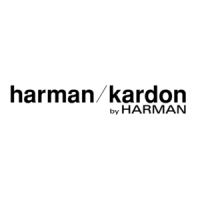21
3-90-00674R28_12/13
A combustion blower is used to extract the combustion
gasesfromtherebox.Thiscausesanegativepressurein
thereboxandapositivepressureintheventingsystemas
showning.46.Thelongertheventpipeandmoreelbows
usedinthesystem,thegreatertheowresistance.
The recommended maximum flue lengths for the
Accentra Insert are as follows:
4" Stainless Steel Flex: 30 Lineal ft. Vertical*
4" PL Vent Pipe:
4" Pl Vent Pipe: 30 Lineal ft. Vertical*
4" Pl Vent Pipe: 14 ft. Vertical w/1-90
°
and 12 lineal ft. horizontal*
If additional 4" PL Vent ttings are required, the overall
length must be reduced by:
Vertical 90
°
or T: 2.5'
Vertical 45
°
: 1.5'
Horizontal 90
°
or : 5.0'
Horizontal 45
°
: 2.5'
3" PL Vent Pipe:
20 Lineal ft. vertical*
8 Lineal ft. vertical w/1-90
°
& 8 lineal ft. horizontal*
If additional 3" PL Vent ttings are required, the overall
length must be reduced by:
Vertical 90
°
or T: 2.0'
Vertical 45
°
: 1.0'
Horizontal 90
°
or T: 4.0'
Horizontal 45
°
: 2.0'
* Long runs of ex or PL vent pipe installed directly vertical from the ue
stub may require more frequent cleaning due to y ash falling off inside
and collecting directly above the combustion blower outlet.
Any use of horizontal venting will require more frequent cleaning. It is the
responsibility of the installer to make sure the entire ue conguration is
accessible for cleaning.
4" stainless steel ex vent piping is only allowed for use
in masonry replaces and chimneys or factory built wood
burningreplaceswithclassAmetalchimneys.Allpelletvent
pipemustbesecuredtogethereitherbymeansprovidedby
pipemanufacturerorby3screwsateachjoint.
Venting
Use only the specied venting components. Use of any
other components will void the product warranty and
may pose a hazard.
Do Not Install A Flue Damper In The Exhaust Venting
System Of This Appliance.
DO NOT CONNECT THIS UNIT TO A CHIMNEY FLUE
SERVING ANOTHER APPLIANCE.
Avoiding Smoke and Odors
Negative Pressure, Shut-down, and Power Failure:
To reduce the probability of back-drafting or burn-back in
the pellet burning appliance during power failure or shut-
down conditions, the stove must be able to draft naturally
withoutexhaustbloweroperation.Negativepressureinthe
housewillresistthisnaturaldraftifnotaccountedforinthe
pelletapplianceinstallation.
Heatrisesinthehouseandleaksoutatupperlevels.This
airmustbereplacedwithcoldairfromoutdoors,whichows
into lower levels of the house. Vents and chimneys into
basementsandlowerlevelsofthehousecanbecomethe
conduitforairsupply,andreverseundertheseconditions.
Outside Air:
Hearth & Home Technologies recommend attaching
outside air in all installations, especially lower level and
main oor locations.
Pernationalbuildingcodes,considerationmustbegivento
combustionairsupplytoallcombustionappliances.Failure
tosupplyadequatecombustionairforallappliancedemands,
mayleadtoback-draftingofthoseandotherappliances.
Whentheapplianceisside-wallvented:Theairintakeisbest
locatedonthesameexteriorwallastheexhaustventoutlet
andlocatedloweronthewallthantheexhaustventoutlet.
When the appliance is roof vented: The air intake is best
locatedontheexteriorwallorientedtowardstheprevailing
winddirectionduringtheheatingseason.
Theoutsideairconnectionwillsupplythedemandsofthe
pellet appliance, but consideration must be given to the
totalhousedemand.House demandmayconsumesome
airneededforthestove,especiallyduringapowerfailure.It
maybenecessarytoaddadditionalventilationtothespacein
whichthepelletapplianceislocated.Consultwithyourlocal
HVACprofessionaltodeterminetheventilationdemandsfor
yourhouse.
O
+
= Positive static pressure
= Negative static pressure
Fig.46
Inside
hopper
Inside
rebox
Inuepipe
Infan
chamber
&starter
collar
+
+
-
-
O
-

